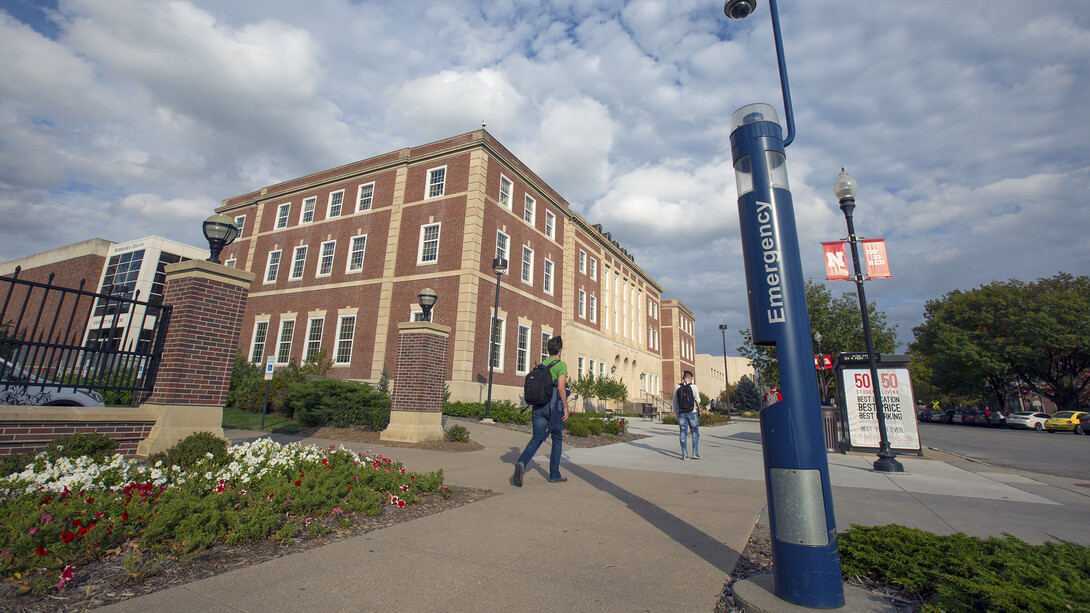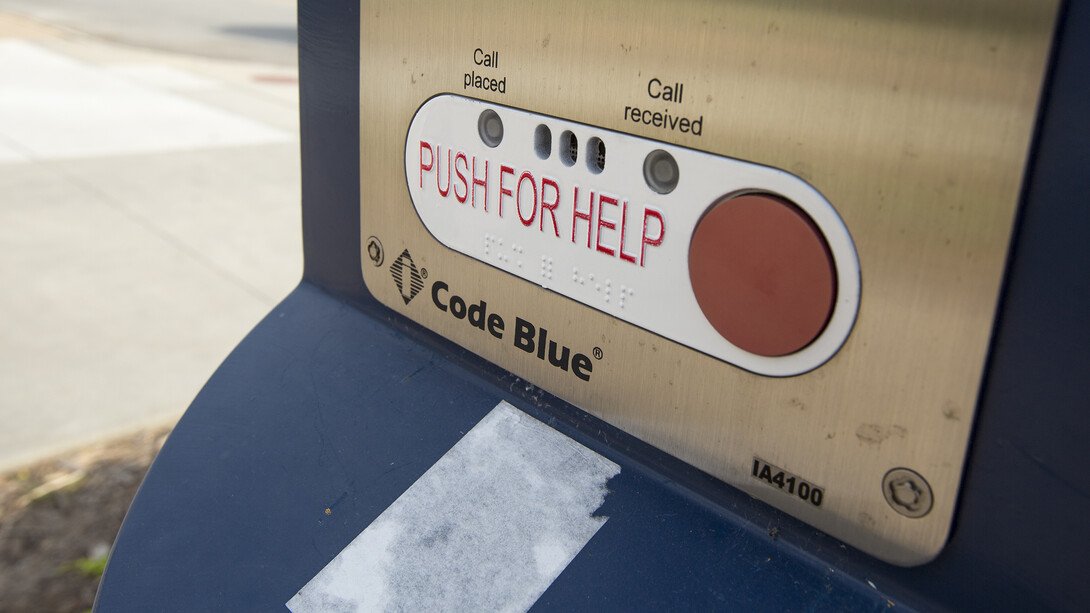
The proliferation of mobile phones, lack of use and rising maintenance costs have signaled the end of blue emergency phones at the University of Nebraska–Lincoln.
After nearly four years of consideration and campus discussion, removal of the public safety phones is being completed this week. When finished, the nearly 100 emergency phones on campus will be reduced to two, one each outside the Nebraska and East unions.

“This decision was made primarily because these phones have simply outlived their usefulness now that nearly everyone has access to a cell phone,” Police Chief Owen Yardley said. “They are also expensive to maintain and replace.”
The phones, many of which are encased in blue cylinders emblazoned with “emergency” and topped with strobe lights that flash when activated, have a 15-year life expectancy. Along with regular maintenance, each phone requires a major refurbishing every five to seven years.
Yardley said replacement and maintenance for the phones were estimated at $1.7 million over the next 15 years. The estimate included costs to replace the phones (nearly all of which are past life expectancy), the installation of fiber-optic lines to replace outdated copper lines, periodic refurbishment costs, monthly phone checks, and ongoing maintenance.
When factored against annual replacement and maintenance of the blue public safety phones, each call for actual assistance (eliminating prank calls) costs the university an estimated $19,000.
“And, in recent years, none of the calls coming through were for true emergency situations,” Yardley said. “Most calls were hoaxes. Of the few instances with a caller, people were asking directions or would report non-emergency information.”

In discussions to gauge university opinions on the project, many students reported they were unaware that the blue emergency phones were available. And, when walked through scenarios on campus safety, the large majority of participants said they would seek shelter and use a mobile phone to contact emergency responders rather than wait for assistance next to a stationary emergency public safety phone.
“All of our campus training today centers on safety concepts such as run, hide and fight,” Yardley said. “Nothing in public safety training says stop and wait in an open area for help.”
Yardley said other university initiatives have also reduced the need for the blue emergency phones. Those include expansion of the security camera system; implementation of electronic door access to many university buildings, including all residence halls; improved outdoor lighting; a Facilities Management and Planning-led initiative that is improving safety by opening up university landscapes; more access to personal safety and situational awareness training; and regular reviews for university safety concerns.
Removal of the emergency phones has also been supported by many university groups and organizations, including the Association of Students of the University of Nebraska, Faculty Senate, Chancellor’s Commission on the Status of Women, University Association for Administrative Development, and University of Nebraska Office Professionals Association.
“We’ve made sure that this was not solely a decision made by university police,” Yardley said. “We presented the facts, that 99 percent of people have mobile phones, that these phones are expensive to maintain, lack of use and that many initiatives have been in place to enhance campus security, and received support that the removal of these phones at this time simply makes sense.”
Nebraska is among a number of universities, including University of California, Davis, that have in recent years made the decision to eliminate public safety phones.







